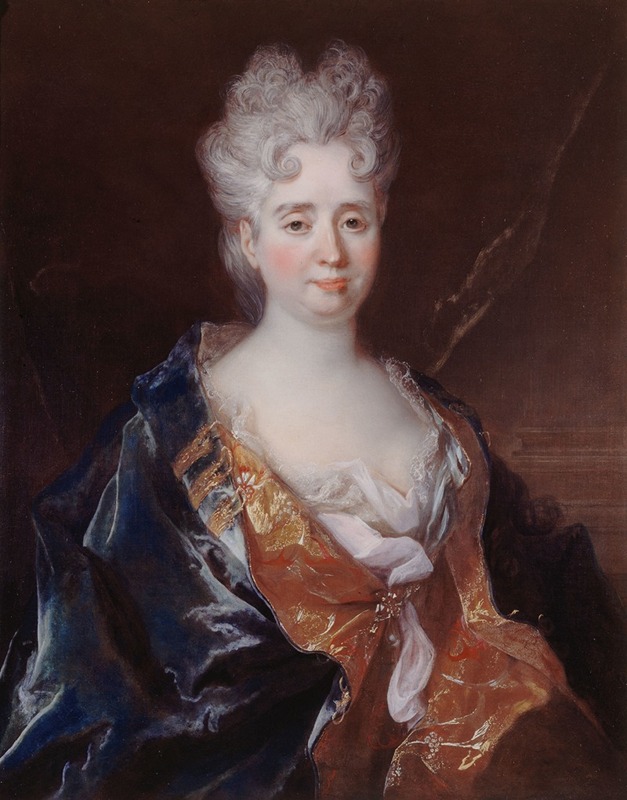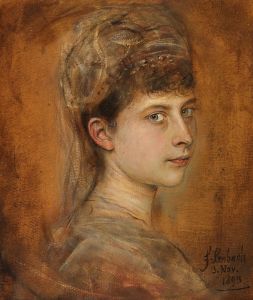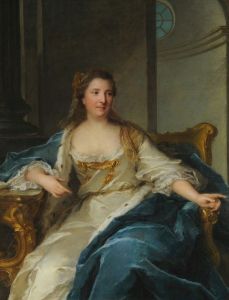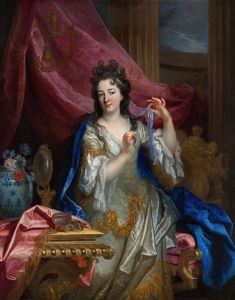
Portrait d’Anne-Thérèse de Marguenat de Courcelles, marquise de Lambert
A hand-painted replica of Nicolas de Largillière’s masterpiece Portrait d’Anne-Thérèse de Marguenat de Courcelles, marquise de Lambert, meticulously crafted by professional artists to capture the true essence of the original. Each piece is created with museum-quality canvas and rare mineral pigments, carefully painted by experienced artists with delicate brushstrokes and rich, layered colors to perfectly recreate the texture of the original artwork. Unlike machine-printed reproductions, this hand-painted version brings the painting to life, infused with the artist’s emotions and skill in every stroke. Whether for personal collection or home decoration, it instantly elevates the artistic atmosphere of any space.
Nicolas de Largillière, a prominent French Baroque painter, is renowned for his exquisite portraits that capture the elegance and sophistication of the French aristocracy during the late 17th and early 18th centuries. One of his notable works is the "Portrait d’Anne-Thérèse de Marguenat de Courcelles, marquise de Lambert." This portrait exemplifies Largillière's skill in rendering the opulence and grace of his subjects, as well as his ability to convey their social status and personality through meticulous attention to detail.
Anne-Thérèse de Marguenat de Courcelles, known as the Marquise de Lambert, was a distinguished French writer and salonnière. Born in 1647, she became an influential figure in the intellectual and cultural life of Paris. Her salon, held at the Hôtel de Nevers, was a gathering place for philosophers, writers, and artists, including notable figures such as Voltaire and Fontenelle. The Marquise de Lambert was celebrated for her wit, intelligence, and contributions to literature, particularly her essays on moral philosophy and the education of women.
Largillière's portrait of the Marquise de Lambert captures her poised demeanor and refined elegance. The painting is characterized by its rich color palette and the artist's adept use of light and shadow to create a sense of depth and realism. The Marquise is depicted in luxurious attire, indicative of her high social standing. Her clothing is rendered with intricate detail, showcasing Largillière's mastery in painting textures such as silk and lace. The background of the portrait is typically understated, allowing the viewer's focus to remain on the subject.
The portrait not only reflects the Marquise's status but also hints at her intellectual pursuits. Her composed expression and direct gaze suggest a woman of confidence and intellect, qualities that were highly regarded in the salons of Paris. Largillière's ability to capture such nuances in his portraits made him a sought-after artist among the French elite.
Nicolas de Largillière was born in Paris in 1656 and trained in Antwerp, where he was influenced by Flemish painting techniques. His career flourished upon his return to France, where he became a member of the Académie Royale de Peinture et de Sculpture. Largillière's portraits are celebrated for their vibrant colors, attention to detail, and the lifelike representation of his subjects. He painted numerous members of the French nobility, as well as prominent figures from other European courts.
The "Portrait d’Anne-Thérèse de Marguenat de Courcelles, marquise de Lambert" is a testament to Largillière's artistic prowess and his ability to capture the essence of his subjects. It remains an important work for its historical and cultural significance, offering insight into the life and times of the Marquise de Lambert and the broader context of French society during the Baroque period.
This painting is housed in a collection that preserves the legacy of both the artist and the subject, allowing contemporary audiences to appreciate the artistry and historical context of Largillière's work. Through this portrait, viewers can gain an understanding of the role of women in the intellectual circles of 18th-century France and the enduring impact of the salons on European culture.


















